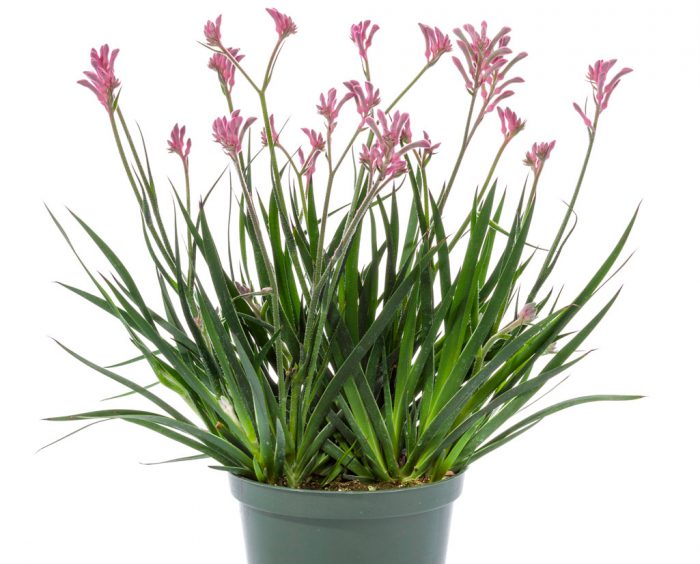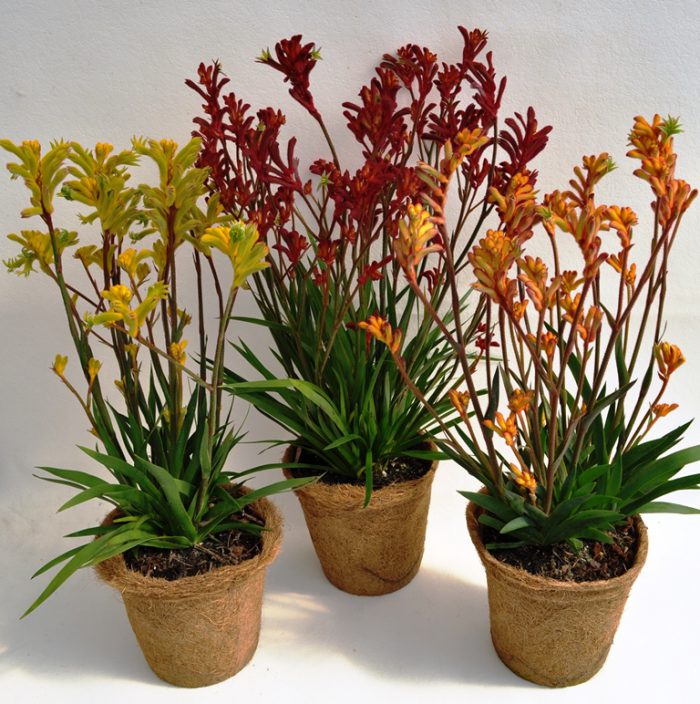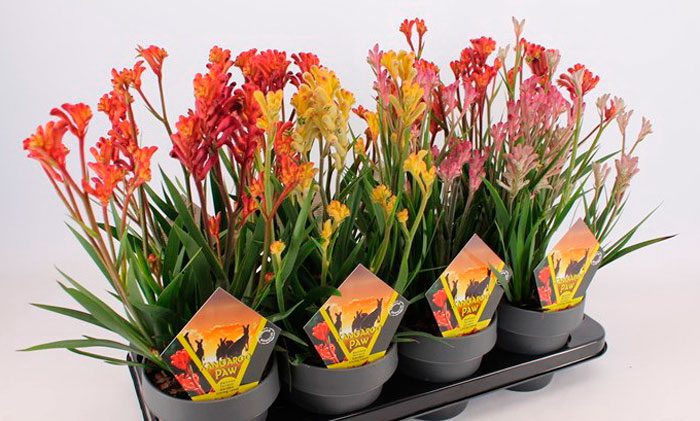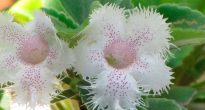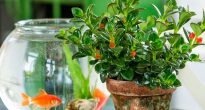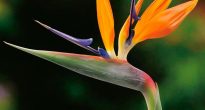A plant like anigosantos (Anigozanthos) has appeared on the shelves of flower shops relatively recently. It is directly related to the Haemodoraceae family. In the wild, this spectacular flower can be found in Western Australia. Today there are 13 species of anigosantos. Due to the unusual shape of the flower, this plant is also called “kangaroo legs"(Kangaroo Paws) or" kangaroo paw ".
This evergreen perennial can reach a height of 2 meters (in the wild). Its belt-like or lanceolate leaves form a basal rosette, and they are colored in different shades of green. On thin stems there are panicles with not quite ordinary flowers, which bear a great resemblance to kangaroo paws and are colored pink, yellow or greenish. There are also two-color flowers, for example: green-violet, red-black, green-red or orange-yellow. The final color shade of flowers is directly dependent on the thin hairs on their surface, and they are also often located on a part of the shoot.
This plant blooms from May to July. In many countries where there are fairly mild winters, this plant is grown as a garden perennial.
If you cut a flower and put it in water, then it will retain its freshness for a long time. That is why they love to use it when composing various compositions. Due to the unusual shape and color of these flowers, a very interesting effect is achieved. From completely dried flowers, which also do not lose the brightness of their color, they make up bouquets that are sold in the homeland of Anigosantos as souvenirs.
Not so long ago, dwarf hybrids appeared on the market that can be safely grown at home.
Domestic varieties have flower stalks, the length of which can be from 25 to 50 centimeters. Such an unusual flower grows rather slowly and after a while forms a highly branched bush, on which there are many panicles of flowers. In order for the plant to bloom for a long time, it is necessary to remove the faded peduncles in time.
Content
Caring for anigosanthos at home
Illumination
It is a very light-loving plant and in summer it is best to move it outdoors to a sunny location. In the event that it does not have enough light (when placed in the shade), anigosantos does not bloom and gradually begins to fade.
Temperature regime
Not afraid of the heat. And also it is not damaged by a slight frost, but this flower is not winter-hardy. In winter, it is recommended to place it in a well-lit and cool (10-14 degrees) room.
Humidity
Prefers low humidity. It grows well in the dry air of apartments during the cold season.
How to water
In the summer, water the plant abundantly, but make sure that no liquid gets on the leaves. Flowers can fall off if the ground dries up.
The substrate used must be perfectly permeable to water, this will help avoid stagnation. Otherwise, rot may appear on the roots.
Top dressing
During active growth and flowering, the plant is fed 1 time in 2 or 3 weeks. In winter, fertilizers are not applied to the soil.
Transplant rules
Young plants do not need a transplant. But it can be carried out when the roots do not fit in the pot. The transplant is carried out in the last spring weeks, while the old overgrown bush is divided. Don't forget a good drainage layer.
Earth laugh
The composition suitable for anigosantos, earth mixture includes: leafy earth, peat and sand. You can also use purchased soil for flowers, only it is recommended to add chopped bark to it. In the wild, these flowers choose rocky or sandy ground. In this regard, a heavy substrate, which hardly allows water to pass through, is not suitable for them.
Dormant period
The dormant period for Anigosantos is observed in winter. At this time, he needs to ensure scant watering, as well as stop fertilizing the soil. Place the flower in a well-lit, cool room.
Reproduction methods
This plant can be propagated using seeds or by dividing a bush.
Sowing seeds is recommended shortly after harvesting. But at the same time, it is worth knowing that their germination persists for several years. Sowing is carried out in a small tray, into which sand mixed with peat is poured. The first shoots should appear in 15-40 days. At the same time, germination is equally good at different times of the year, at normal room temperature. Soon after the emergence of seedlings, you need to pick them into separate small pots.
You can only share an old, overgrown flower. They do this in spring or autumn, when flowering ends. The root is divided with a very sharp knife and all old leaves are carefully removed. The foliage needs to be cut off in order to reduce evaporation by half. Exclude the ingress of water when watering on the sections, as this can serve the development of the disease. They are placed in a shaded area and kept there for several weeks.
Pests and diseases
If there is too much moisture in the air, then very dark spots may appear on the foliage of anigosantos. Spider mites can settle.
Possible problems
- Foliage stretches and turns pale - lack of light. The flower needs a lot of light, and in winter it should be placed in a bright and fairly cool room.
- Foliage becomes wilted and yellow, and roots rot - too abundant watering and poor drainage layer. Transplant the flower to another land and cut off the decayed roots. At the same time, cut the sections with chopped charcoal.
- Flowering does not come - lack of light or non-observance of all conditions of the rest period.
- The tops of the leaves dry out - too low air humidity. After increasing humidity, you must carefully cut off the dry ends.

